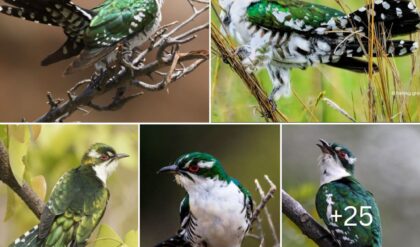This large bird is typically located in forested hills and mountainous regions near streams. It boasts a dark purple plumage adorned with minuscule silvery spots on its head, back, and wings.
Meet the Blue-whistling Thrush:
“Blue Whistling-thrush” by JJ Harrison is licensed under CC BY-SA 2.0.
The blue whistling thrush (Myophonus caeruleus) is a member of the Muscicapidae family, part of the Old World flycatchers. The blue whistling thrush boasts a deep violet-blue hue with shimmering spangles on most of its body feathers, except the lores, abdomen, and under the tail. Its wings have a slightly different shade of blue with white spots at the tips of the median coverts. The bill stands out in yellow.
This bird measures between 31 and 35 cm (12 to 14 inches) in length, with a weight range of 136 to 231 g (4.8 to 8.1 oz) across its subspecies. For comparison, the blue whistling thrush is roughly twice as heavy as an American robin, despite not belonging to the true thrush family, as it falls within the old-world flycatcher family. Among its standard measurements, the wing chord ranges from 15.5 to 20 cm (6.1 to 7.9 inches) in length, the tarsus measures 4.5 to 5.5 cm (1.8 to 2.2 inches), and the bill spans 2.9 to 4.6 cm (1.1 to 1.8 inches). Size can vary across its range, with larger individuals found in the northern part of its habitat and slightly smaller ones to the south, following Bergmann’s rule.
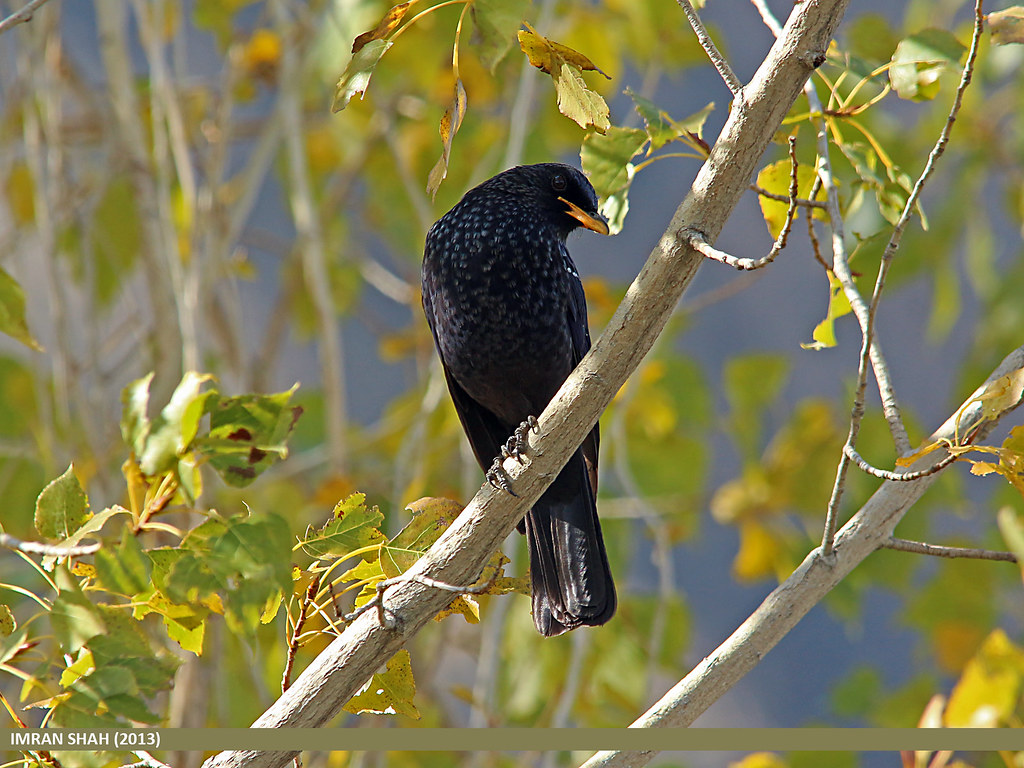 “Blue Whistling Thrush (Myophonus caeruleus)” by gilgit2 is licensed under CC BY-SA 2.0.
“Blue Whistling Thrush (Myophonus caeruleus)” by gilgit2 is licensed under CC BY-SA 2.0.
Both males and females share similar plumage characteristics.
For instance, in northern China, males and females average 188 g (6.6 oz) and 171 g (6.0 oz), while in India, they average 167.5 g (5.91 oz) and 158.5 g (5.59 oz).
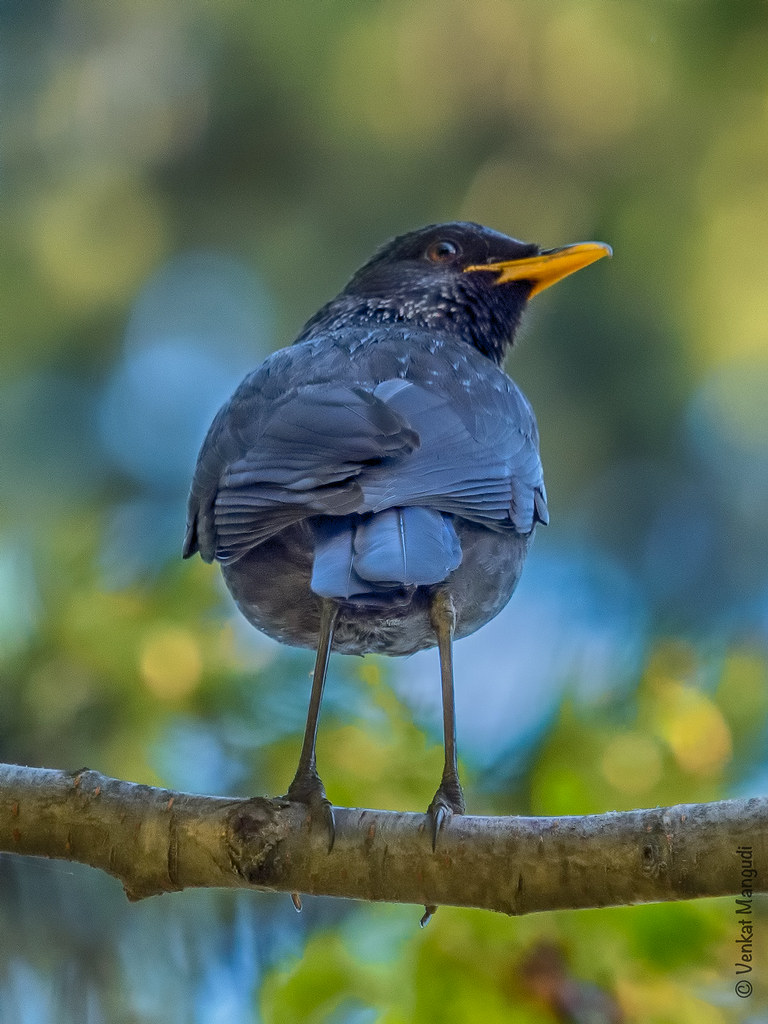 “Blue Whistling Thrush” by Venkat Mangudi is licensed under CC BY 2.0.
“Blue Whistling Thrush” by Venkat Mangudi is licensed under CC BY 2.0.
Its range spans across Afghanistan, Bangladesh, Bhutan, Cambodia, China, Hong Kong, India, Indonesia, Kazakhstan, Laos, Macau, Malaysia, Myanmar, Nepal, Tajikistan, Thailand, Tibet, Turkmenistan, Pakistan, and Vietnam. In the Himalayas, these birds undertake altitudinal movements, descending to lower elevations during the winter.
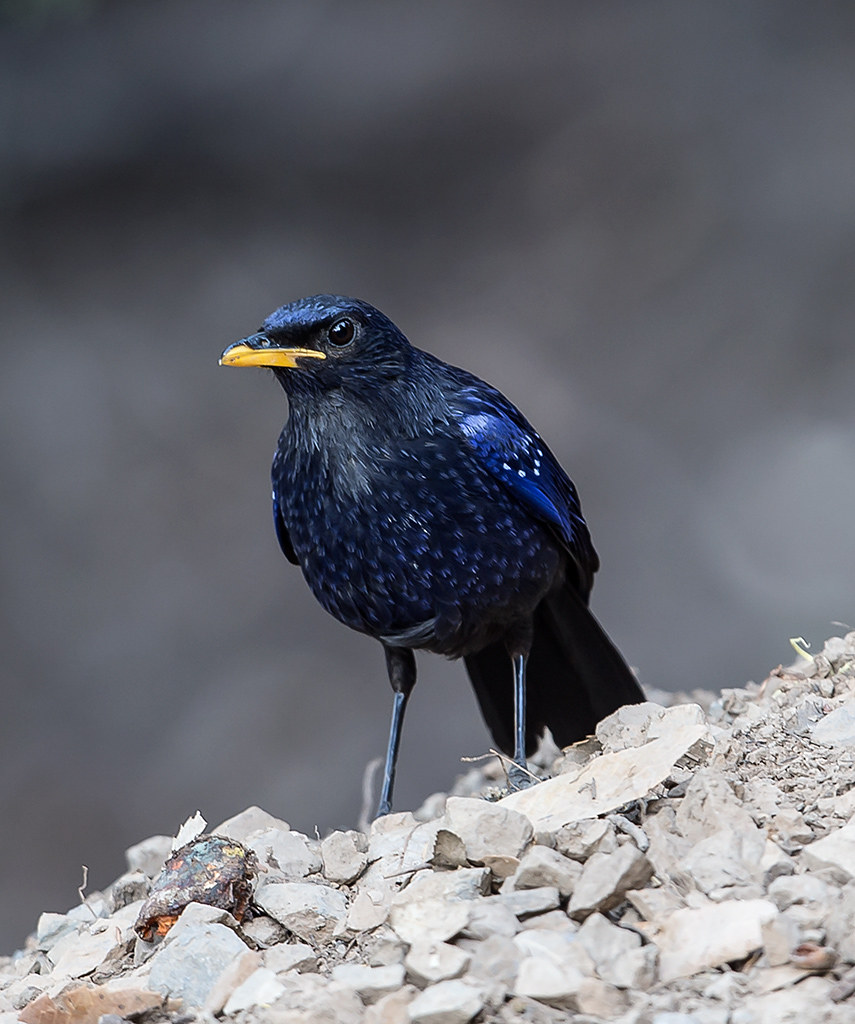
“Blue Whistling Thrush” by Koshyk is licensed under CC BY 2.0.The blue whistling thrush prefers temperate forests and subtropical or tropical moist montane forests, typically found along the Tian Shan and Himalayas.
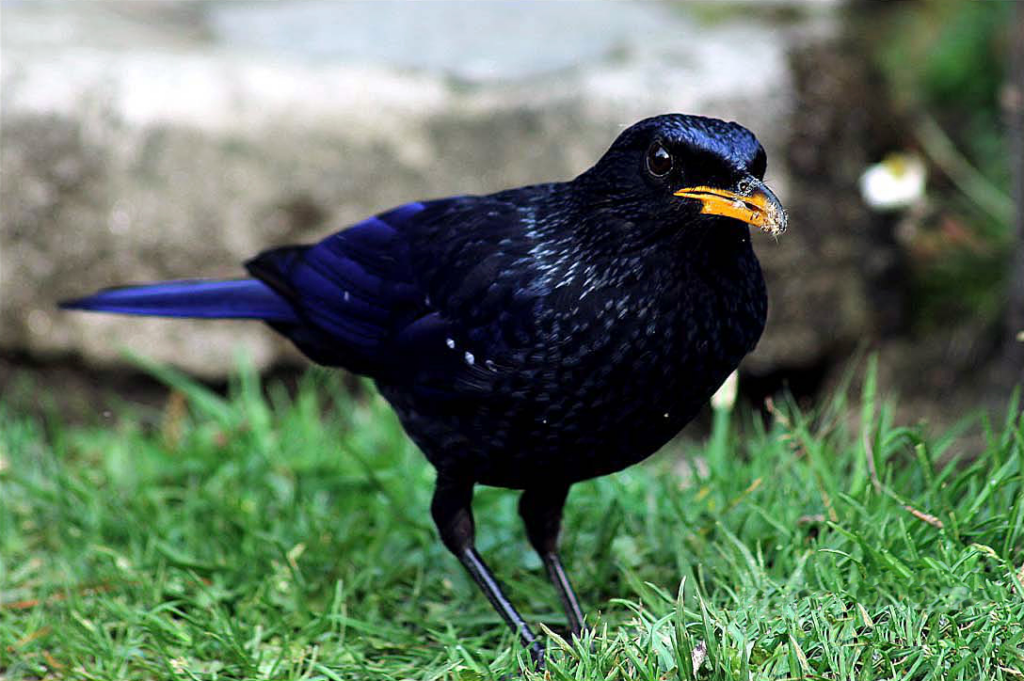
“Blue Whistling Thrush” by Sp.herp is licensed under CC BY-SA 3.0.Their diet includes fruits, earthworms, insects, crabs, and snails. Before consuming snails and crabs, they often crush them against rocks. In captivity, they have been observed to kill and eat mice, and in the wild, they have been documented preying on small birds.
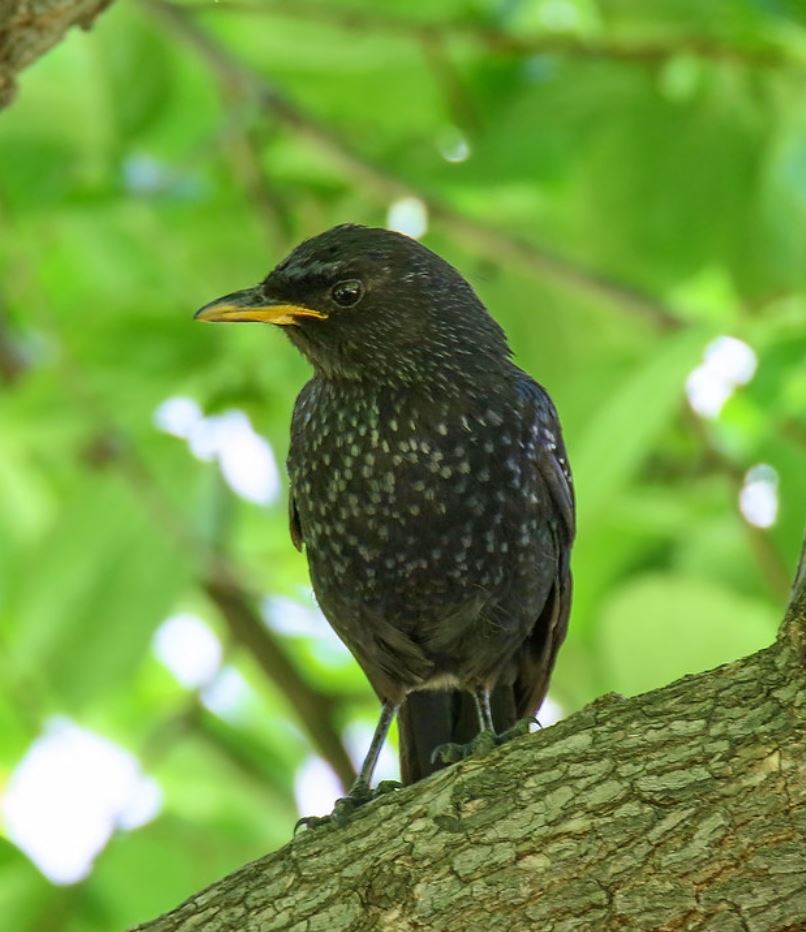
“Blue Whistling Thrush (Myophonus caeruleus)” by gilgit2 is licensed under CC BY-SA 2.0. (cropped)
Blue whistling thrushes are often encountered either alone or in pairs, characterized by their quick, hopping movements on rocks. They frequently flip over leaves and small stones, tilting their heads to check for prey movements. When alarmed, they spread and droop their tails. These birds are active well after dusk, and during the breeding season from April to August, they tend to sing in the darkness of dawn and dusk, a time when few other birds are calling. Their calls are most prominent before sunrise, especially in November. An alarm call from them is a shrill kree. They construct cup-shaped nests made of moss and roots, usually in ledges or hollows alongside streams. A typical clutch contains 3 to 4 eggs, with some pairs raising a second brood.
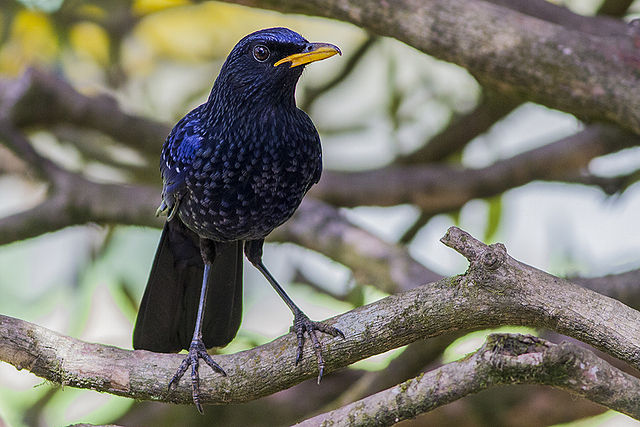
Photo courtesy of Dibyendu Ash/CC BY-SA 3.0This bird is regarded as of Least Concern on the IUCN Red List.
 “Blue Whistling Thrush (Myophonus caeruleus)” by gilgit2 is licensed under CC BY-SA 2.0. (cropped)Listen to this bird next in the video below:
“Blue Whistling Thrush (Myophonus caeruleus)” by gilgit2 is licensed under CC BY-SA 2.0. (cropped)Listen to this bird next in the video below:

